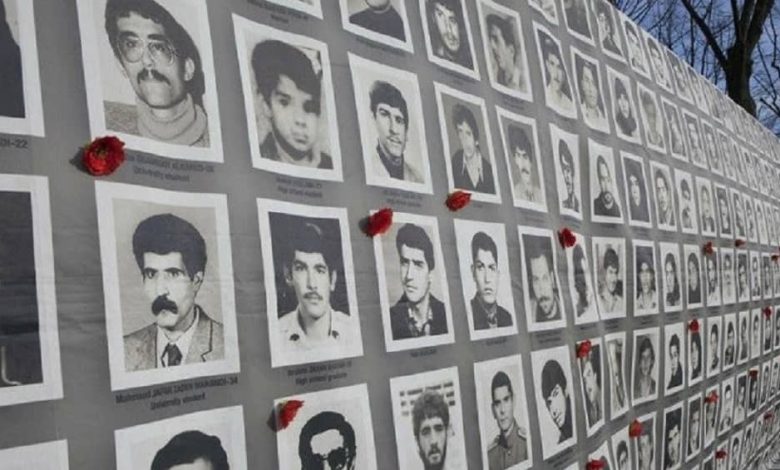Session 84 of Hamid Noury’s Trial: Even Prison Guards Were Troubled by Mass Executing Young MEK Women

summer of 1988, more than 30,000 political prisoners
Written by
Mansoureh Galestan
The Swedish Court resumed its 84th session of the trial of Hamid Nouri, accused of participating in the mass execution of political prisoners in the summer of 1988, on Thursday, April 7.
The witness, Abdolreza Shahab Shokouhi, was a former political prisoner and a former member of the Rah-e Kargar (the Path of Workers) Organization. He was first arrested at the age of 15 during the reign of Mohammad Reza Shah. After the 1979 revolution, was arrested for the second time in Qom in 1981 and sentenced to death, but eventually managed to escape in 1983 when he was on temporary leave.
Following his third arrest, the witness was transferred to Evin Prison where he was handcuffed and had to stand straight for eleven nights successively. Two years later, he was sentenced to death for the second time in a court headed by Judge Hossein-Ali Nayeri in Evin Prison. There, he learned that his brother had been executed. The witness’s death sentence was later commuted to 15 years in prison.
Abdolreza Shahab Shokouhi testified that he had learned about the beginning of the massacre on July 27, 1988, through the Morse code. He confirmed hearing the Friday prayer sermons of then-regime president Ali Akbar Rafsanjani and later chief justice Abdol Karim Mousavi Ardabili where the regime’s followers were chanting slogans “Death to the hypocrites”, with the pejorative term used by the regime in referring to the MEK. These slogans were broadcast in prison via loudspeakers. Following the incident, he said that the television set was taken away from the ward and the newspaper ceased to come in. He also confirmed the interruption of family visits in Gohardasht prison in August 1988.
According to Shokouhi, he was taken to the ‘Death Commission’, where he stated that he does not pray or believe in God. He was whipped fifty times after leaving the room and was taken to a dark hall, which he later found to be an amphitheater.
There, through his blindfold, he saw some slippers and clothes on the floor and six ropes hanging from the ceiling. The witness was taken to a locked room that day. He told the judges that when he heard the sound of a truck and some talking in the courtyard, he went to the window. He saw people dressed in white, like chemical safety coveralls, throwing bags in blankets into the truck.
Shokouhi appeared in front of the ‘Death Commission’ again the next day. The witness explained how he escaped execution by “accepting to obey the laws of society if he was released”. After leaving the commission, along with a few others, he was beaten so badly that he broke his ribs. He remembers a prisoner named Tafrishi who was probably killed by severe beatings. The witness said that another prisoner’s head exploded from being brutally struck by a radiator.
“They promised us forty days of paradise if we kill you,” one of the guards had told the prisoners.
The witness recalled an incident, where prison guards discussed the executions of female MEK members. He told about a prison guard, named Adel asking his peer about things that showed he himself was beginning to doubt things.
I heard Adel asking another guard: “I have a religious question. These girls that we bring down from the gallows are black and blue, and it is clear that they are strangled, and according to Islamic law, only married people can be executed. Does this seem to be right? I’m pondering about this issue.”
In response to Adel, the guard said: “Haj Agha himself knows everything about this and they have ordered it. If necessary, you should ask them. But they certainly have an answer to that [question].”
Responding to a question from Kenneth Lewis, one of the plaintiffs’ attorneys, Shokouhi testified that he believed the women prisoners were Mujahideen prisoners and that he had not heard of any left-wing women being hanged.
The witness stated that he was taken to ‘Haj Agha Abbasi’ by a Revolutionary Guard. Abbasi was the same person whom he had met several times before being blindfolded for the court – for instance, once the TV was removed from the ward, but no one had ever introduced him. Abbasi informed him that he would be transferred to Evin Prison. The witness said that Abbasi’s smile remained in his memory until today.
Shokouhi was transferred to Evin Prison in a private car on the same day and was released from prison in April 1989.

